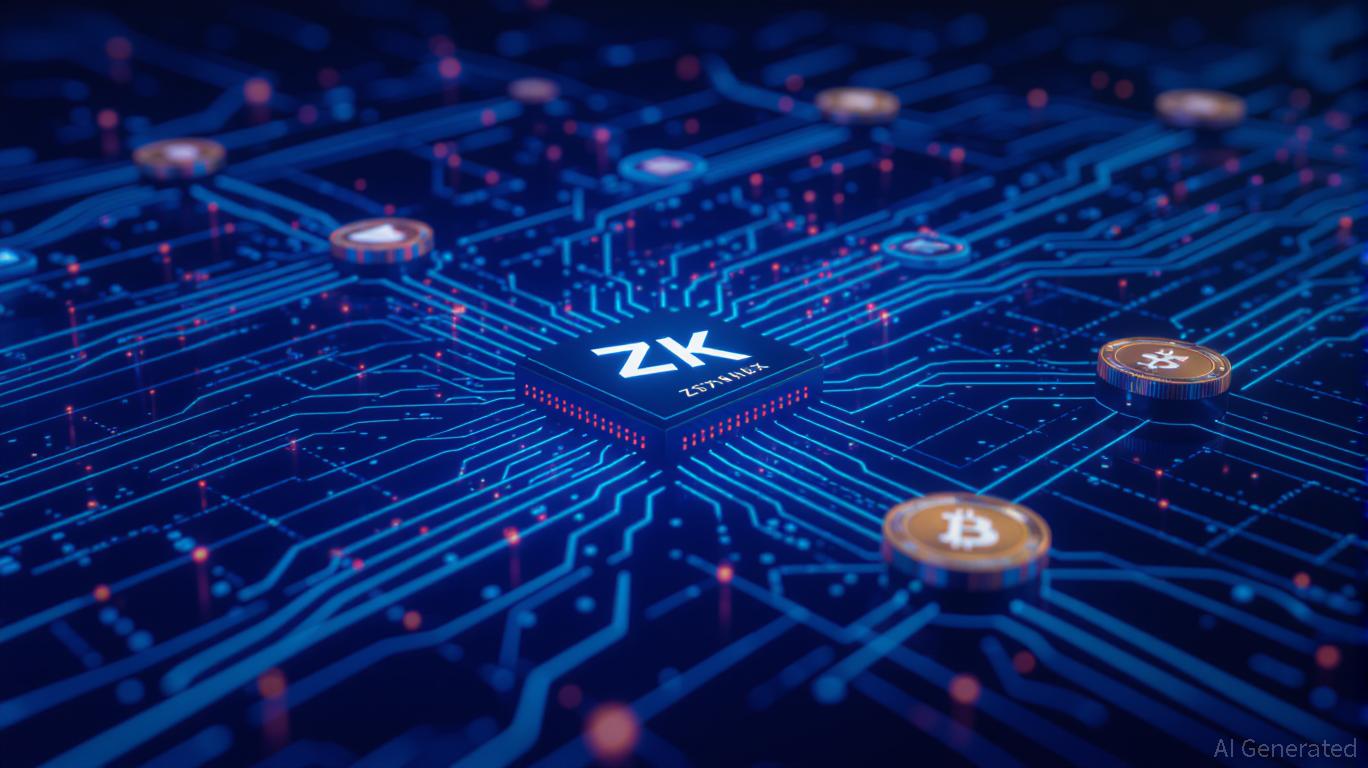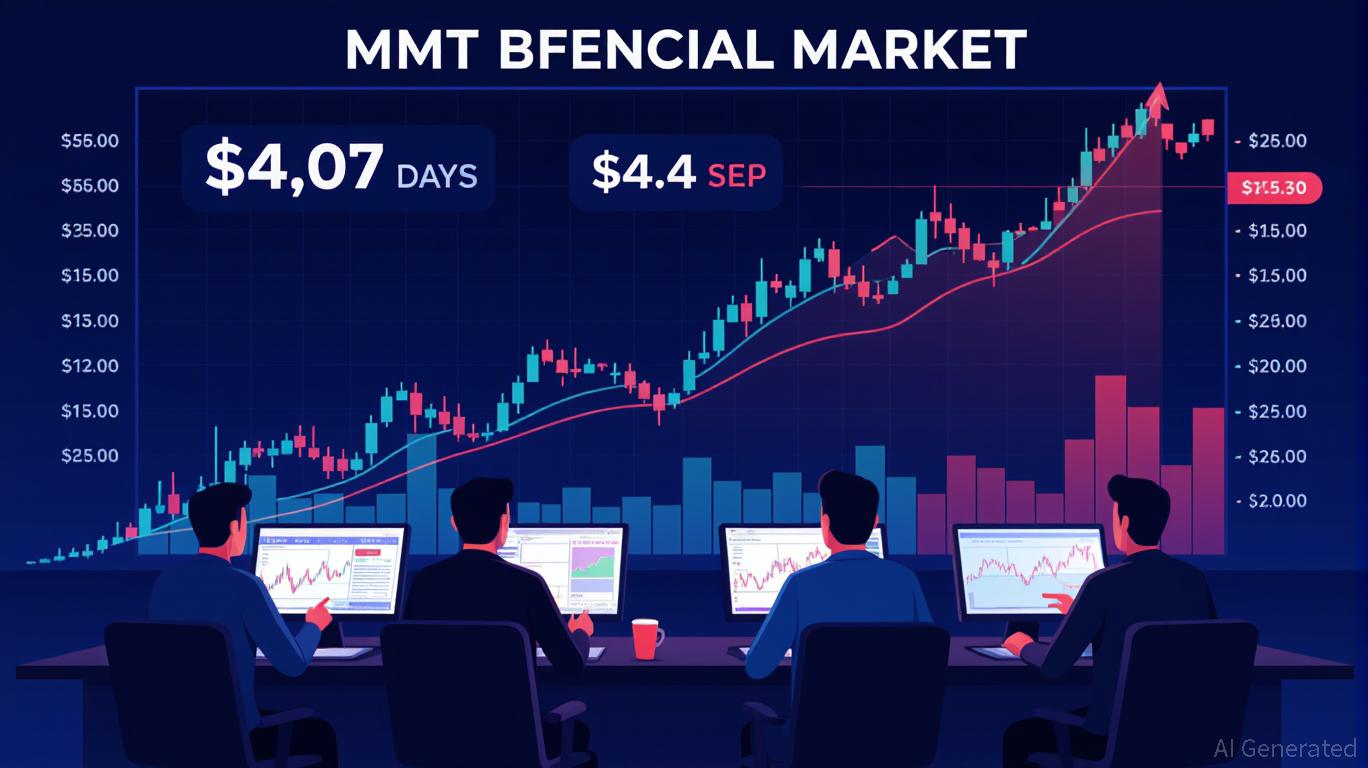Why ZK Coins Are Experiencing a Surge in November 2025
- ZK coins surged in November 2025 as DeFi platforms adopted ZK infrastructure for scalability, privacy, and cost efficiency. - Platforms like Polygon zkEVM and zkSync reduced Ethereum gas fees by 90% while enabling thousands of transactions per second. - Institutional adoption (Deutsche Bank, Sony) and Zcash's 23% price jump highlighted ZK's role in bridging privacy-focused crypto with mainstream finance. - Technological breakthroughs in ZK scaling (50x cost reduction) and rising TVL ($72M BTC bridged to
ZK Infrastructure: The Foundation for DeFi’s Future Expansion
Zero-knowledge proofs, a cryptographic breakthrough that allows for secure and private transactions at scale, have become essential for DeFi platforms aiming to rival conventional financial institutions. Solutions like Polygon zkEVM and zkSync are at the forefront of this movement. For example, Polygon’s ZK-Rollup technology can cut
StarkNet, another platform built on ZK technology, utilizes STARKs (Scalable Transparent Arguments of Knowledge) to process transactions off-chain and submit proof of validity to Ethereum’s main network. This method not only boosts transaction throughput but also guarantees cryptographic privacy—an increasingly important feature for users concerned about surveillance and regulatory pressures, as mentioned in a

The ZK Coin Boom: Privacy, Scalability, and Institutional Interest
The recent upswing in ZK coins, especially Zcash (ZEC), is closely linked to the growing use of ZK infrastructure.
Growing institutional involvement has further boosted demand. For instance, Deutsche Bank and Sony have adopted ZK-rollup solutions to facilitate large-scale transactions in compliance with regulatory requirements, according to Bitget’s analysis. At the same time, platforms such as Aztec are utilizing ZK-Rollup technology to enable confidential DeFi transactions, ensuring privacy without compromising on verification, as highlighted in the Top 10 ZK Rollup Projects in 2025 report. These advancements indicate a maturing industry where ZK infrastructure is evolving from a technical enhancement to a strategic necessity for both DeFi and traditional financial institutions.
Innovation and Shifting Market Forces
The intersection of technological progress and institutional participation has created a positive feedback loop for ZK coins. Innovations in ZK scaling, such as improvements to Ethereum’s EVM, have slashed the costs of ZK-proofs by a factor of 50, enabling layer 2 solutions like Lighter to process over 24,000 transactions per second, as detailed in Bitget’s analysis. This enhanced scalability has made ZK-rollups a viable backbone for DeFi, drawing interest from both individual and institutional investors.
Additionally, the unique benefits of ZK coins are driving their integration into DeFi platforms. Zcash’s robust privacy features, for example, meet the rising demand for financial anonymity in an era marked by frequent data leaks and surveillance, as discussed in the
Conclusion: The Long-Term Outlook for ZK Coins
The sharp rise in ZK coins during November 2025 points to a larger movement: the widespread integration of ZK-based infrastructure within DeFi. As platforms such as
Disclaimer: The content of this article solely reflects the author's opinion and does not represent the platform in any capacity. This article is not intended to serve as a reference for making investment decisions.
You may also like
XRP breaks through $2.50
OpenAI is considering entering the consumer health application field.
Federal Reserve's Daly: Policymakers need to remain open to further rate cuts
The Growing Buzz Around Momentum (MMT): Could This Be the Next Big Thing in Crypto?
- Momentum (MMT) surged to $5.18B market cap after Binance's oversubscribed Prime Sale and explosive listing price spikes. - Built on Sui blockchain, MMT's ve(3,3) liquidity model and CLMM architecture aim to optimize DeFi capital efficiency and trading. - Institutional tools like MSafe and RWA integration via Momentum X address DeFi's security and compliance challenges. - Extreme volatility and speculative trading raise sustainability concerns despite Binance's airdrop-driven network effects.
